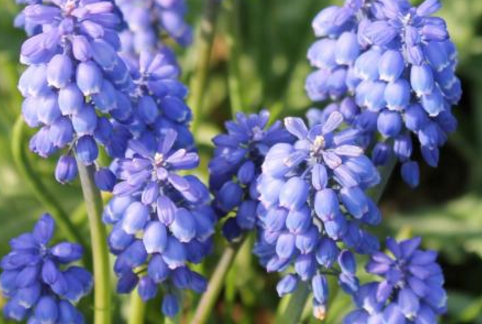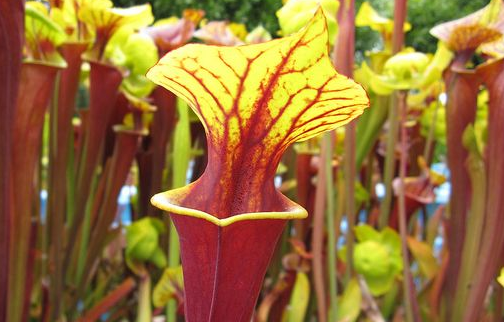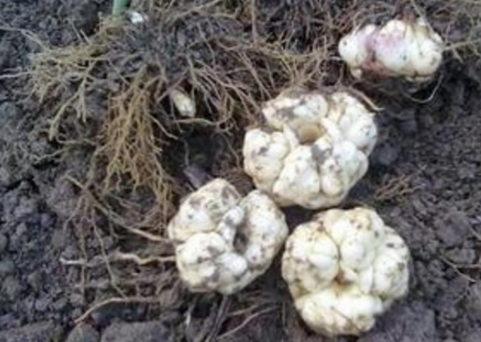Culture method of grape hyacinth
1. Soil
Grape hyacinth has strong adaptability, is easy to cultivate, and prefers loose, fertile and well-drained rotten leaf soil.
two。 Moisture content
The cultivation of grape hyacinth should keep the basin soil moist, should be watered in time in case of drought, and should stop watering after the flowers fade.

3. Light
The grape hyacinth likes sunshine and is resistant to semi-shade. It should lengthen the light after sprouting in spring to make the plant grow more rapidly.
4. Temperature
The grape hyacinth has strong cold tolerance and the suitable growth temperature is 15-20 ℃. It can be cultivated in open field in East China and North China.
How to raise grape hyacinth? the breeding method of grape hyacinth
Grape hyacinth is a fine flowering ground cover plant of perennial herbs introduced from Europe, which is a small flower bulbous plant. Many people do not know how to raise grape hyacinth. This article introduces the breeding method of grape hyacinth and provides relevant pictures.
Culture method of grape hyacinth
Grape hyacinth is native to France, Germany and southern Poland in central Europe. It is suitable for growing on loose, fertile and well drained sandy loam soil with suitable growth temperature of 15 ℃ to 30 ℃. Grape hyacinth is generally propagated by sowing or planting bulbs. After the seeds are harvested, they can be directly seeded in the open field in autumn, germinate in April the following year, and the seedlings will blossom after 3 years. The bulbs can be planted after the leaves withered in summer, take root in autumn and grow leaves before winter. Dormant in summer, evergreen leaves in winter, strong cold resistance, only leaf tip withered and yellow in Beijing area.
Grape hyacinth has strong adaptability, easy cultivation and management, can be transplanted at any time, and can also be used to promote cultivation in winter. At the end of August, the bulbs were refrigerated in a 6 ℃ to 8 ℃ freezer for 50 days, then removed and placed in a ventilated place in the cold room. At the beginning of December, the bulbs were planted in flowerpots for planting chrysanthemums with 8 to 12 bulbs in each pot. In 15 ℃ to 25 ℃ maintenance, New Year's Day, Spring Festival can blossom, can be used as indoor hanging potted flowers. Grape hyacinth can be used as a cover under the forest, can also be used for flower bed edge or flower border layout, unique interest.
Grape hyacinth can be used as a cover under the forest, can also be used for flower bed edge or flower border layout, unique interest. Grape hyacinth likes a warm and cool climate, light is also resistant to semi-shade, requires a soil rich in humus, loose and fertile, well-drained soil, and strong cold tolerance.
Propagation mode of grape hyacinth
Grape hyacinth is also resistant to semi-shade, requiring humus-rich, loose, fertile, well-drained soil, and strong cold tolerance. Generally use sowing or planting bulblets to propagate. After the seeds are harvested, they can be directly seeded in the open field in autumn, germinate in April the following year, and the seedlings will blossom after 3 years. The bulbs can be planted after the leaves withered in summer, take root in autumn and grow leaves before winter. Dormant in summer, evergreen leaves in winter, strong cold resistance, only leaf tip withered and yellow in cold areas such as Beijing.
The above is the introduction of the breeding methods of grape hyacinth. I hope it will be helpful to you. Because the flowering period of grape hyacinth is early and its flowering time is long, it is often used for ground cover under sparse forest or for flower border, lawn, belt and edge planting, as well as for embellishment and cluster planting in rock garden. family flowers pot or as cut flowers also have a good ornamental effect.
When is the grape hyacinth planted? Culture method of grape hyacinth
Introduction: grape hyacinth originated in central Europe, and has been introduced and cultivated in Hebei, Jiangsu, Sichuan and other provinces in China. Grape hyacinth will enter the dormant period, its optimum temperature is 15 ℃ to 30 ℃, and the best sowing time is from November to December.
Muscari
Sowing method:
In December, put into a tile basin with 1 part of coarse sand, broken pond mud and 1 part of rotten rice bran to form a nutritious soil, bury the bulb in the soil and cover the soil with 23 cm of soil, put it in a sunny place, do not water too much at first, and apply phosphorus and potassium fertilizer once the leaves are exposed to the soil.
Culture method of grape hyacinth
1. Soil: grape hyacinth has strong adaptability, easy cultivation and management, can be transplanted at any time, and likes rotten leaf soil with fertile, loose and good drainage.
2. Watering: keep the humidity of the grape hyacinth after planting, water it in time when it dries early, and stop watering after the flowers fade.
3. Lighting: the grape hyacinth likes the environment with sufficient light, and is also resistant to semi-shade. When the flower buds grow in spring, move to 60% of Rizhao, 70%, so that the flower stem can elongate rapidly.
4. Temperature: grape hyacinth has strong cold tolerance, and the optimum temperature for germination is 20-259C, which can be cultivated in open field in East and North China.
5. Fertilization: after the grape hyacinth germinates in early spring, pay attention to topdressing. After the leaves grow, the diluent of nitrogen, phosphorus and potassium can also be applied to promote the development.
6. Insect diseases: common smut (mainly harmful to flowers), southern root nematode disease, stem nematode damage. Powdery mildew was sprayed with 1000 times of 50% tophan wettable powder; nematodes can be killed with 80% dioxychloropropane EC 15-20 times. 7. Dormancy: the bulb has the habit of dormancy in summer, and the aboveground withered into the dormancy period in May. The bulb is best when it is dry. The newly dug bulb is stored at 20-25 ℃, and the storage temperature drops to 15-18 ℃ after October, and 8-10 ℃ is suitable in winter.
- Prev

How to raise bottle grass
The matrix bottle grass does not have a high requirement for the matrix, because its root is very developed and will fill the bottom of the flowerpot. We can configure this matrix ourselves. Mix peat soil, water moss, perlite and other materials together, and remember to put some broken tiles or bricks at the bottom of the basin.
- Next

Propagation method of Lilium officinalis
The seeds were collected in autumn and stored in the spring of the following year. After a week of sowing, it can germinate. After germination, it should be properly shaded to avoid direct light and burns. Generally, small bulbs grow after autumn, and the bulbs can be dug out and planted in flowerpots. A plant raised in this way may blossom in one to three years.
Related
- Fuxing push coffee new agricultural production and marketing class: lack of small-scale processing plants
- Jujube rice field leisure farm deep ploughing Yilan for five years to create a space for organic food and play
- Nongyu Farm-A trial of organic papaya for brave women with advanced technology
- Four points for attention in the prevention and control of diseases and insect pests of edible fungi
- How to add nutrient solution to Edible Fungi
- Is there any good way to control edible fungus mites?
- Open Inoculation Technology of Edible Fungi
- Is there any clever way to use fertilizer for edible fungus in winter?
- What agents are used to kill the pathogens of edible fungi in the mushroom shed?
- Rapid drying of Edible Fungi

